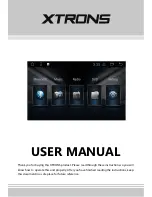
&
User
AN-80i
Manual
70-00072-01-08b
Proprietary Redline Communications © 2009
Page 97 of 128
June 4, 2009
TFTP: You must specify the TFTP server address and the full name of the binary file
(including .bin extension). The software binary file must be located in the default
directory of the TFTP server.
FTP: You must specify the FTP server address, account user name, account password,
and the full name of the binary file (including .bin extension). The software binary file
must be located in the default directory for the specified user account.
5.2.23 User
Use the
user
command to manage user accounts, passwords, and user Groups. When
in user mode, only the <chgpasswd> field is available, since the user can change only
his own password. The other commands are available only for members of the
administrator Group.
Table 36: CLI - user
PTP PMP Description
√
√
Manage the user accounts.
user <add> <chgpasswd> <del> <print>
add
: Administrators can use this command to add new user
accounts. Usernames and passwords may be up to 15
alpha-numeric characters including a-z, A-Z, 0-9, dash (-),
and underscore (_).
user add <username> <usertype> <Enter>
chgpasswd
: For the user accounts, the chgpasswd command
must be executed without the <username> parameter.
Administrators can change their own password, or the
password of any user account.
user chgpasswd [<username>] <Enter>
User's can change only their own password.
user chgpasswd [<username>] <Enter>
del
: Administrators can use this command to delete user
accounts. This option is available only for administrators.
user del <username> <Enter>
: Administrators can use this command to display a list of
user accounts. This option is available only for
administrators.
user print <Enter>
5.2.24 Whoami
Use the
whoami
command to display the username of the current Telnet session. This
command is not available when logged in as administrator.
Table 37: CLI - whoami
PTP PMP Parameter/Description
√
Display username for this session.
whoami
















































